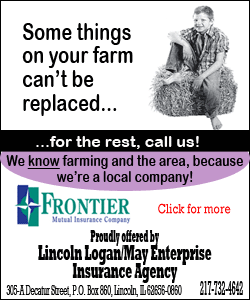 "Sitting in that hearing, I became aware of a disconnect between
the industry owner/operators and the community members," said
Goldsmith, a University of Illinois agricultural and consumer
economist in the College of Agricultural, Consumer and
Environmental Sciences. "It sounded like two different
conversations." "Sitting in that hearing, I became aware of a disconnect between
the industry owner/operators and the community members," said
Goldsmith, a University of Illinois agricultural and consumer
economist in the College of Agricultural, Consumer and
Environmental Sciences. "It sounded like two different
conversations."Through the Freedom of Information Act,
Goldsmith obtained the transcripts from public hearings on
proposals to site three different confined animal feeding
operations, known as CAFOs, in Illinois. In analyzing the
textual data, he coded 589 statements from people who attended
the hearings. Statements concerning the appropriateness or
inappropriateness of the proposal were coded into categories
relating to the legitimacy of the facility and according to
themes, such as children, property value, health, air and water
pollution, and animal welfare.
Goldsmith heard the community voicing their pragmatic
concerns, while the livestock facility owners and managers
focused on the eight criteria required by the Livestock
Management and Facilities Act to site a CAFO. Examining the
actual words that were spoken at public hearings clearly
demonstrated that conflict arose because each side saw the
problems from different perspectives.

"The owner/managers must address the law. They're doing their
due diligence," Goldsmith said. "The problem is that the
community has different concerns -- concerns that may or may not
always be factual, but concerns nonetheless."
Goldsmith said that more and better communication will help
both the owner-managers and the community members reconcile
important issues. It requires validation from both sides, and
being factual is the key.
"There have been a number of cases of CAFOs bringing
community members onto their farm, or inviting them to visit
other farms to see their operation and the various technologies
-- kind of an educational field trip," Goldsmith said.
The reverse is extremely valuable as well. He recommended
that managers visit community members in their homes to
experience firsthand what it is like being a neighbor. In this
way, common experiences are built, communication expands and the
conversation becomes more factual so goals and objectives can be
specified.
"The community is expressing issues relating to odor and
health, and it's important that businesses understand those and
that the community verifies those so that it's not an emotional
issue that becomes either exaggerated or understated. There are
some examples of this happening, but it needs to be built in as
a routine part of the process," he said.
[to top of second column] |

Goldsmith said that although the Livestock Management and Facilities
Act is an efficient and effective regulation for the construction of
livestock facilities, businesses and neighbors might go the extra
mile to get to know each other's concerns and see the siting
firsthand from another's perspective.
"There's too much at stake not to," he said. "What I realized is
that we need to work at consensus building, education, listening and
learning from both sides, to develop a good working relationship."
Goldsmith said some of the conflict that occurs at the public
hearings may be exacerbated by the fact that the community often
comes into the process late.
"The LMFA, based on good engineering practice, requires that
business managers do a lot of the work before the community is even
brought into the conversation," Goldsmith said. "With such a great
development opportunity, we should engage the community early and
say, ‘Let's work together on this.' I'm not naïve enough to believe
that this will solve everything. It's a very complex and emotional
problem, but I think it would at least help the process move in the
right direction," he said.
Although Goldsmith's research dealt with siting livestock
facilities, he recognized that these same problems can be seen with
proposals for shopping malls, schools, airports, wind farms and
other similar facilities that affect communities.
"This is part of a comprehensive research program that looked at
more than just the direct economic benefits of the livestock
industry in Illinois," Goldsmith said. "We had looked at the
economic impact and saw what a CAFO does for communities, taxes,
labor markets, input suppliers and lots of spillovers that are quite
good," Goldsmith said. "The research recognized that the industry is
very productive and efficient, but this study showed that it's also
about being a good neighbor."

"Outlining a Strategic Legitimacy Assessment Method: The Case of
the Illinois Livestock Industry" will be as published in an upcoming
issue of Agriculture and Human Values. Filipe Pereira was a
co-author. The research was originally funded by C-FAR and the
Illinois Livestock Development Group.
[Text from file received from the
University of Illinois College of Agricultural, Consumer and
Environmental Sciences] |